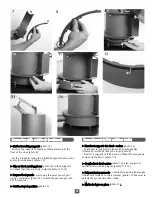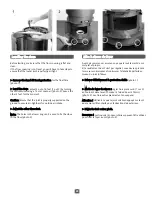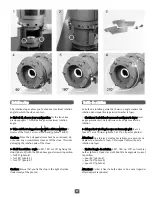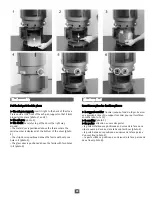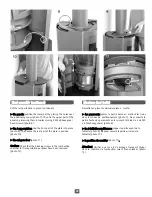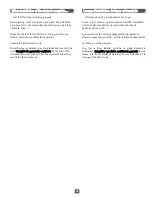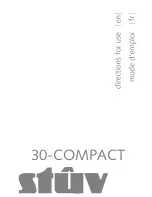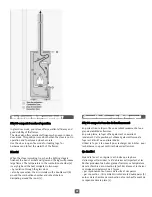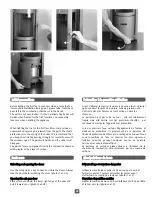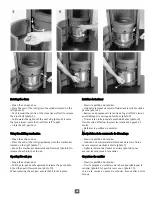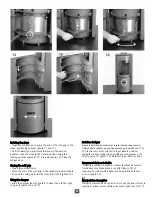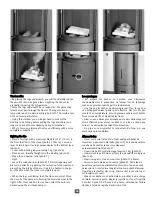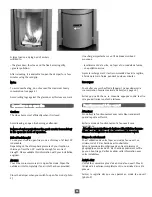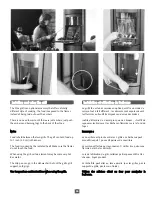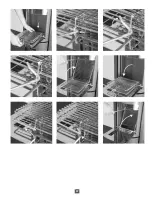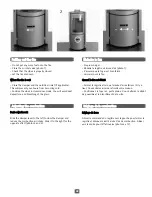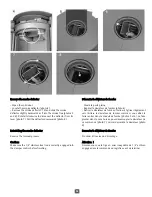
36
Drying
Whatever the wood chosen it should be really dry. Damp
wood heats a great deal less and a great part of the energy is
used to evaporate the water it contains. The sapwood – as the
soft wood just beneath the bark is called – can contain up to
75% of water. Furthermore, moist wood releases a lot of
smoke and not many flames and it causes the fireplace, its
window and the flue to get dirty and soot up. To avoid
wasting energy and slow combustion, Stûv highly
recommends burning wood that has moisture content below
20%.
Wood drying
Big logs should be split for the wood to dry better. Wood
should be covered or sheltered from the rain, but well
ventilated. Generally you should allow two years for the wood
to dry properly. You will soon learn to estimate the dryness of
logs by weighing them in your hand. The dryer they are the
lighter they will feel, and they will produce a clearer sound
when you knock two together.
Moisture tester
This little accessory, available from your Stûv dealer, accurately
tests the quality of the wood and its moisture content.
Before measuring the moisture content, split the log. Take the
reading on the freshly split face of the wood. For electrode
moisture meters, the electrodes must be pushed into the wood
perpendicular to the grain of the wood.
Du bois bien sec !
Quel que soit le bois choisi, il doit être bien sec. Le bois
humide chauffe infiniment moins : une grande partie de
l’énergie n’est utilisée que pour évaporer l’eau qu’il contient.
L’aubier
−
c’est ainsi qu’on appelle le bois jeune
immédiatement sous l’écorce
−
peut contenir jusqu’à 75%
d’eau. De plus, le bois mouillé dégage beaucoup de fumée et
peu de flammes et il provoque l’encrassement du foyer, de sa
vitre et de la cheminée. Pour éviter toute perte d'énergie et
une combustion au ralenti, Stûv recommande fortement de
brûler du bois à moins de 20% d'humidité (voir schéma ci-
dessous).
Le séchage du bois
Pour favoriser le séchage, il est important que les gros rondins
soient fendus. Le bois sera couvert ou abrité de la pluie, mais
bien ventilé. En général, il faut compter deux années de
séchage. Avec l’expérience, vous apprécierez le séchage en
soupesant les bûches : plus elles sont sèches, plus elles sont
légères et plus elles produisent un son clair quand on les cogne
l’une contre l’autre.
Testeur d'humidité
Ce petit accessoire, disponible chez votre revendeur Stûv,
permet de contrôler la qualité du bois et son taux d’humidité
avec précision.
Avant de procéder à la mesure du taux d’humidité, il est
nécessaire de fendre la bûche. Prenez la mesure sur la face
fraîchement fendue. Pour les humidimètres à électrodes,
celles-ci doivent être enfoncées dans le bois de manière
perpendiculaire au fil du bois.
Summary of Contents for 30 Compact
Page 1: ...30 0 CO OMPAC CT ...
Page 2: ...2 ...
Page 8: ...8 ...
Page 9: ...9 30 COMPACT ...
Page 14: ...14 ...
Page 15: ...15 30 COMPACT ...
Page 31: ...31 30 COMPACT ...
Page 47: ...47 ...
Page 57: ...57 ...
Page 63: ...63 ...


